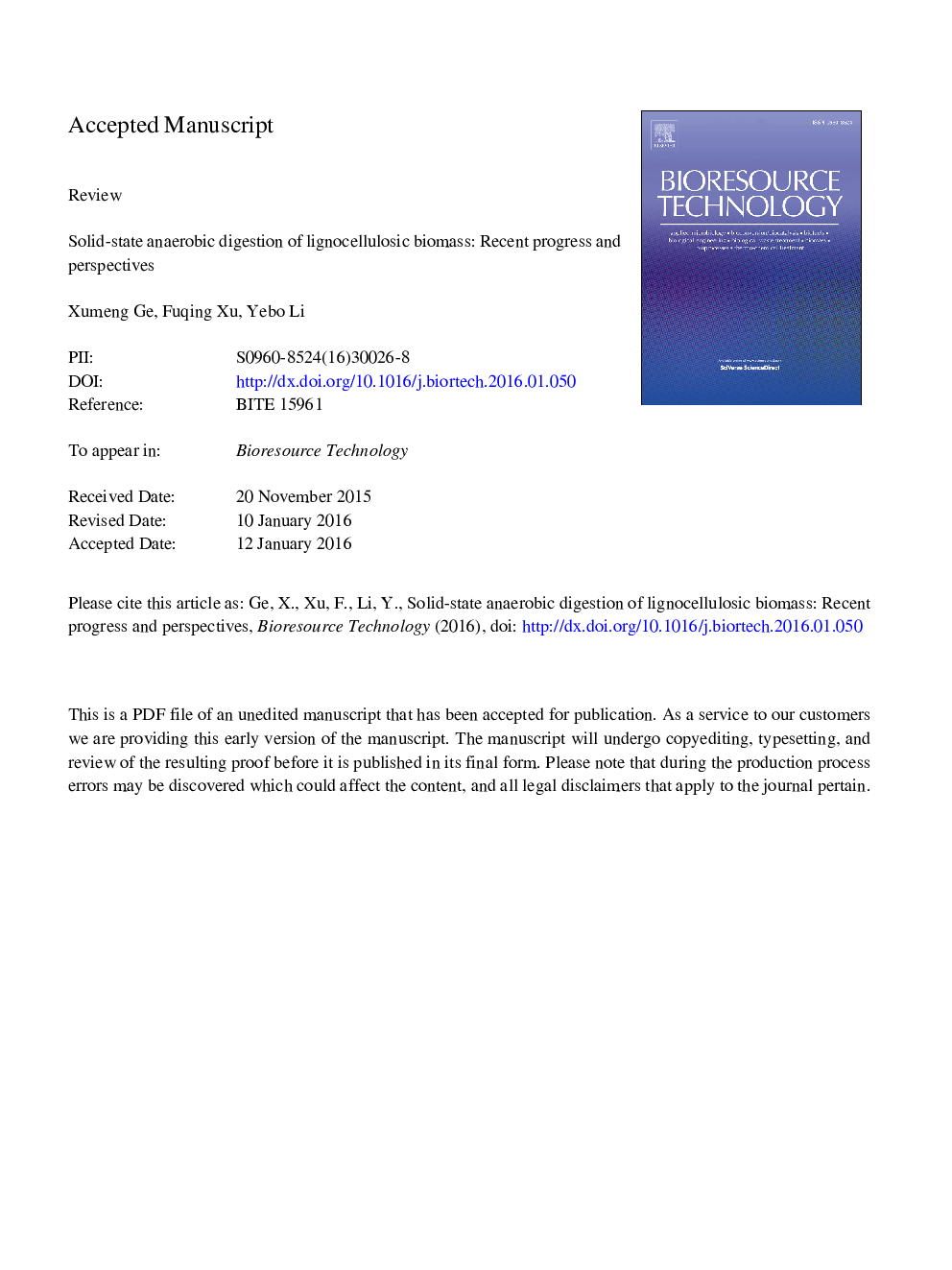| Article ID | Journal | Published Year | Pages | File Type |
|---|---|---|---|---|
| 679251 | Bioresource Technology | 2016 | 42 Pages |
Abstract
Solid-state anaerobic digestion (SS-AD), which has gained popularity in the past decade as an environmentally friendly and cost-effective technology for extracting energy from various types of lignocellulosic biomass, is reviewed in this paper. According to data of biomass and methane yields of lignocellulosic feedstocks, crop residues have the highest methane production potential in the U.S., followed by the organic fraction of municipal solid waste (OFMSW), forestry waste, and energy crops. Methane yield and process stability of SS-AD can be improved by different strategies, such as co-digestion with other organic wastes, pretreatment of lignocellulosic biomass, and optimization of operating parameters. Different models for SS-AD have been developed, and insights into SS-AD processes have been obtained via microbial community analysis, microscope imaging, and tracer techniques. Future research and development in SS-AD, including feedstock identification and co-digestion, feedstock storage and pretreatment, SS-AD reactor development, digestate treatment, and value-added production, are recommended.
Keywords
Related Topics
Physical Sciences and Engineering
Chemical Engineering
Process Chemistry and Technology
Authors
Xumeng Ge, Fuqing Xu, Yebo Li,
